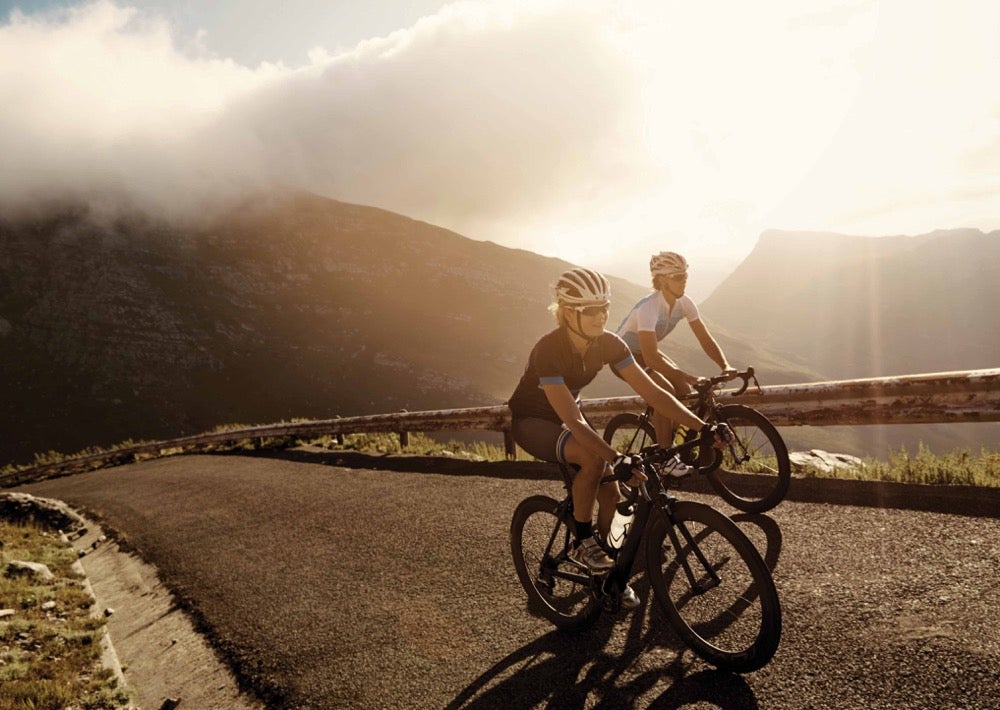Build Your Engine By Hitting All The Right Training Zones

Photo: iStock
Q: How do i make sure I’m hitting all the right training zones?
A: When trying to understand the fitness components that go into great races, I love the oft-used analogy of “building an engine.” Here is how it works and some workouts that you can use to build yours.
Fuel economy (MPG) = aerobic economy
When you buy a vehicle, you consider the vehicle’s fuel economy, or how much gas is required to drive a certain distance. An athlete’s aerobic economy is defined by the amount of oxygen an athlete requires to swim, bike and run. The less oxygen required, the more economy. Aerobic economy is earned by doing many hours at an effort below your aerobic threshold, or that pace that feels conversational yet is focused. Perceived effort feels like a 3 or 4 on a scale of 1–10. These base building workouts allow an athlete to adapt physiologically to be more efficient at everything that goes into maintaining forward motion for a long time.
Swim: 6×500 steady with minimal rests
Bike: 2–5 hours at 56–75% of functional threshold power (FTP)
Run: 1–2 hours at heart rate of approximately 20–30 beats below lactate threshold heart rate (LTHR)
Engine speed = threshold speed/pace/watts
The biggest predictor of speed in endurance athletics is an athlete’s ability to go fast at their anaerobic/lactate threshold. The faster you are at this critical intensity landmark, the faster you will be at all of your training and racing zones. Therefore, it is crucial to work on this fitness component. You can increase your “engine speed” with training efforts done just below the anaerobic threshold (sub-threshold) and efforts done right at the threshold (tolerance intervals). Below are some examples.
Sub-threshold swim: 2×500, 2×400, 2×300 done at critical swim speed (or CSS, your 1500 time trial pace) plus 3–6 seconds per 100
Tolerance swim: 10×100 at CSS with 10 seconds rest
Sub-threshold bike: 3x10K at 90% of FTP
Tolerance bike: 5x5K at FTP
Sub-threshold run: 3x2K at half-marathon pace
Tolerance run: 8x400m at 10K race pace
Big engine = VO2max
To be a great endurance athlete, you need to be able to take in and use a tremendous amount of oxygen. VO2 max is your ability to transport oxygen through the circulatory system and use it in the muscular system. Improving your VO2max is analogous to building a bigger engine.
However, VO2max is also dependent on your body size and genetics, and your number is a poor predictor of your actual success in your next race. Still, if you’ve done all of the other work, a few well-timed VO2max workouts can make you a better athlete.
VO2max workouts are done only when an athlete has built all of the other components of their engine. I think of these workouts as “the icing on the cake.” They are very challenging and exhausting, so use them sparingly.
Swim: 3–5 x 200–300 yards at max effort with 150 easy kick recoveries
Bike: 3–5 x 3:00–5:00 at 106–120%
of FTP with equal rest intervals consisting of easy spins
Run: 3–5 x 800m at 1-mile race pace with 400 easy walk/jog after each
Building your engine to be economical, faster and bigger will help you to reach your athletic potential when combined with sound nutrition, good recovery habits, mental skills development and strength training.
Chris Palmquist is a Head Coach with Team MPI, a USAT Level III and Youth/Junior Coach, USAC Level I Coach, and US Paratriathlon Coach with 18 years of experience. She can be reached at chris@teammpi.com.